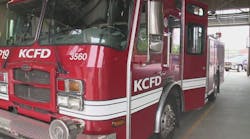Question: While there is always so much discussion in the business community about customer service, why is it also so important for a public service such as a fire department?
Answer: Just because we are a vital public service does not mean that we cannot go out of business. In a society that bases its decisions about the quality of a service or business on quick impressions, customer service will always be the great differentiator in private or public enterprise. It is the vital link that transforms who we are to what we do in the eyes of the customer. Customer service is the critical, operative aspect of marketing success for maintaining long-term support and growth of your fire department.
There are probably as many volumes written about customer service as there are about marketing. In fact, I would say that if your department can become outstanding at customer care, then most other aspects of marketing will take care of themselves.
Customer care can be a little bit like the weather. As Ben Franklin, founder of the U.S. fire service, once said about the elements, “Everybody talks about it. But very few do anything about it.” This seems to be the case with customer service. The constant refrain is that, in general, service is not very good. Naturally, this depends on how one defines “service.” If you think about it, customer service is a little bit like the weather in another sense: it is all around us. It is a constant. It is no different for the fire and emergency services. We just cannot escape the fact that in most situations we are going to be dealing with people.
In a public service, the entire market comprises our base of customers. However, we do not have the luxury of selecting who we want our customers to be. In fact, the term “customer” has taken some time to sink into the culture of fire protection. The fire and emergency services have been latecomers to this particular aspect of marketing. Customer service is a vital part of the discipline of marketing management. It is just as critical to the maintenance of our service as the other aspects of our vital contribution to the public good: saving lives and property; and educating the public about how to prevent emergencies.
Chief Alan Brunacini of the Phoenix Fire Department, always on the cutting edge of change in the fire service, wrote one of the first books on the subject in the mid-1990s: Essentials of Fire Department Customer Service (IFSTA, 1996). If you really want to understand the pure essence of true customer service from one of the best in our business while also gaining insight into how to practice it well, you should read this manual from cover to cover.
As Brunacini states it so well, “The most important element of fire and emergency services has never changed: the relationship and feeling between the citizen who has a problem and the firefighter who responds to solve the problem. The two become intensely involved in a very special experience that defines essentially why we exist as a service.” This is also why I believe that it is best to define the customer service part of what we do as customer care.
Scratch a firefighter and you will find someone who cares intensely about people in need of help, about family and about each other. This is the reason that I prefer to use the term “customer care.” Think about the pace of our contemporary society with its fragmented families and alienated individuals. Most people today more than ever are just looking for a little tender, loving care. We can deliver that care. It is on our uniforms. It is the reason for our existence. It is our purpose. You may think that firefighting and emergency service is what you do, but the result of what you do is in the eyes of the people we help. Once you add in the fact that those we help pay for the service in tax dollars, you begin to see that customer care is “critical care.”
One other fact we need to consider: Internal care is at least as important as external. This means that the departmental pyramid is turned upside down with the chief on the bottom and the firefighters on the top, right next to the customers. If you are not serving the customer directly, then you had better be supporting those who do.
It is virtually impossible to “motivate” people to become service-minded. We all deal with service people who are not motivated to serve every day in thousands of transactions. This is really amazing to behold in a market economy, because this lapse of service – just basic kinds of things like knowing how to deal with people in need – provides the key elements of what I like to call “the competitive edge.” Every firefighter has this kind of service motivation written on his or her DNA. Every business today, private or public, needs a competitive advantage to set it apart, to position it away from others.
An understanding and practice of superior customer care is one of the key public aspects of a public service, yet it is one of the most private and individual kinds of a relationship: an individual’s emergency. When we arrive on the scene, we are already into “service recovery.” We didn’t cause the problem, but we are going to do our best to fix it. Most of the calls that we receive run the gamut from major building fires to EMS to “good intent.” In most situations, we have the chance to work closely with our citizens in a way that really sets us up for success.
Customer service is, for the most part, a matter of expectations and satisfaction. Citizens expect that we will know how to handle most emergency incidents, even the worst kinds of situations like 9/11. That is what they have come to expect from their fire department. We are there to help and they call us.
Always try to put yourself in the mind of the citizen you are helping. Probably the person is scared or at best perplexed; at the least (and on most occasions) the person just needs some information or an answer to a question. The major opportunities for success lie in between these extremes, especially in the way we go about our business, how we treat our customers and the image that we portray as we do our jobs, especially in non-emergency situations. Most people will not remember much of what we do to help in a dire emergency. They will remember what we do in a non-emergency.
Like it or not, it is what our citizen customers do not expect that will gain their attention and many times determine how they view their fire department. This is called a moment of truth: when you are face to face with a customer and you have the chance to go the extra mile to serve. In these situations, just do the right, best thing exceedingly well. It’s a small investment for a big return.
Good customer care should achieve the following goals:
- It solves an individual problem in a personal way
- It is all about attitude and execution
- The beauty of its execution lies in the details and the process
- It completes the marketing equation of delivering on the promises we make as a service
So how do we set ourselves up to successfully deliver superior customer care? Tune in next time for “Customer Care Basics: Creating a Process that Delivers Quality Service.”
Ben May will present “Marketing Basics for Fire and Emergency Services” at Firehouse Expo 2005, July 26-31 in Baltimore.Ben May, a Firehouse® contributing editor, has been developing the discipline of fire and emergency services marketing management for the past 15 years. He has been a firefighter for Montgomery County, MD, Fire and Rescue and fire commissioner for the Woodinville, WA, Fire and Life Safety District. May holds a bachelor’s degree in public affairs from the University of Oklahoma and a master’s degree in international communication from the American University in Washington, D.C. He has been a vice president of two international marketing firms over the last 25 years, and now is responsible for business development for Epcot at Walt Disney World Resort.





